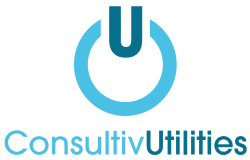Proper disposal of hazardous waste is crucial for protecting public health and the environment. Hazardous waste can be a particular concern to many workplaces, especially if your business is in the construction, manufacturing, or healthcare sector.
What is hazardous waste?
There are a variety of items that are considered hazardous – from Waste Electrical and Electronic Equipment (WEEE) to materials such as oils or chemicals. Other types of hazardous waste can include:
- Chemicals (e.g., acids, solvents, pesticides)
- Batteries
- Electrical equipment (e.g., old computers, televisions)
- Fluorescent light tubes
- Paints and varnishes
- Asbestos
- Clinical waste (e.g. syringes, medical equipment)
How to classify your waste to check if it’s hazardous
The first step to handing hazardous waste is to determine if it is hazardous. Hazardous waste is typically labelled with specific symbols, such as:
- The skull and crossbones (indicating toxicity)
- The flame (indicating flammability)
- The corrosion symbol (indicating corrosivity)
You should also check product labels and safety data sheets (SDS) for information on whether a material is hazardous.
How to handle hazardous waste
You must always store hazardous waste safely and securely and in accordance with hazardous waste regulations. Any producer or holder of hazardous waste has a legal duty to manage the storage and disposal of hazardous waste safely and appropriately. Failure to comply with can result in large fines, and potentially the closure of your business. Find out more here on the UK government website: Hazardous waste
There are different storage rules for the different categories of hazardous waste. But all hazardous waste must be stored so that there’s no threat to public health or the environment, even if that threat isn’t immediate. To safely and securely store waste, use the below checklist as a guide:
- Secure waste in a safe place
- Use suitable containers that will stop waste escaping into the environment
- Label containers clearly with the type of waste they contain
- Use covers to stop waste blowing away
- Use waterproof covers if rain could cause contaminated run-off or prevent the waste from being reused
Important note: It is illegal to mix hazardous waste with either non-hazardous or another hazardous waste.
Special considerations for specific types of hazardous waste
Batteries
Batteries contain heavy metals and should not be thrown away with regular waste. Many retailers and local councils provide battery recycling points.
Electrical equipment
Waste electrical and electronic equipment (WEEE) should be taken to designated recycling centres. Many local councils offer collection services for large items, and retailers often provide take-back schemes for small electrical items.
Asbestos
Asbestos poses severe health risks and requires specialised handling. If you need to dispose of asbestos, contact a licensed asbestos removal contractor.
Clinical waste
Clinical waste from households, such as syringes and medical supplies, should be disposed of using special bins provided by local healthcare services. Do not place these items in regular rubbish bins.
How to reduce hazardous waste
Buy in smaller quantities: Only purchase the amount of hazardous material you need to minimise leftover waste.
Use non-hazardous alternatives: Whenever possible, choose products that are less harmful to the environment.
Properly store hazardous materials: Ensure that hazardous materials are stored correctly to extend their shelf life and prevent accidents.
Use an authorised waste carrier to collect, recycle or dispose of waste
We can help you source an authorised waste carrier for your hazardous business waste. Proper disposal of hazardous waste is a shared responsibility that helps protect our environment and public health. By following the guidelines outlined above and utilising an authorised waste carrier you can ensure that your hazardous waste is managed safely.
Categories:

